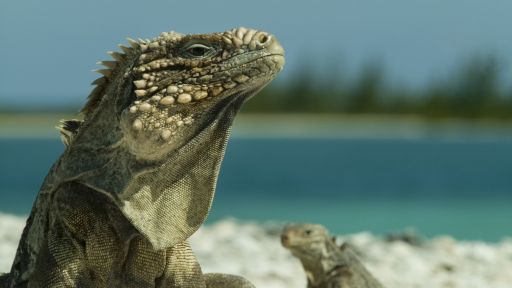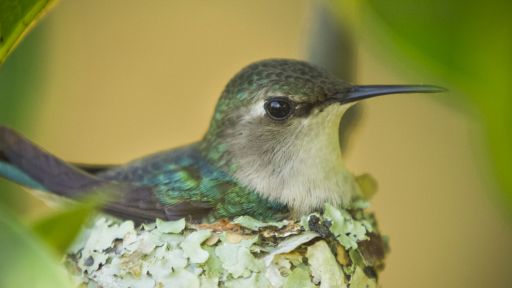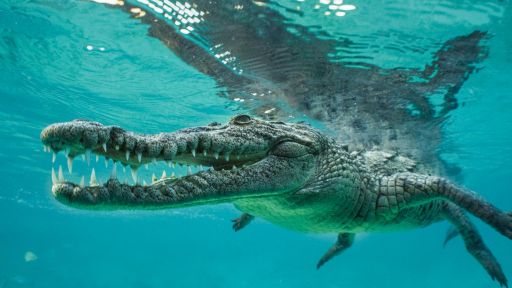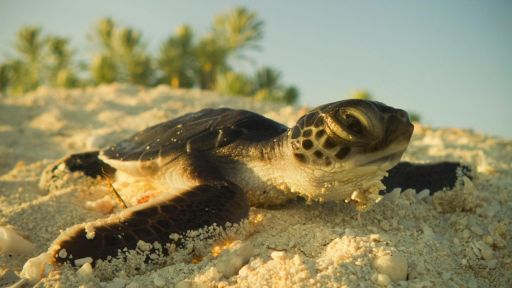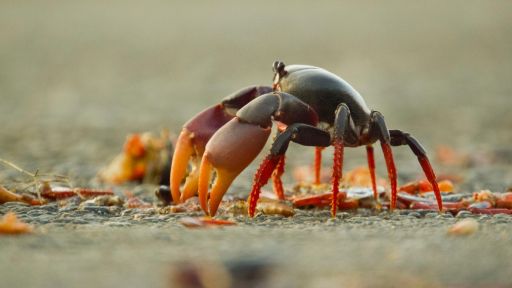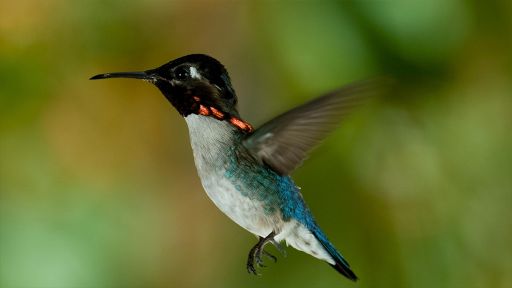As the largest island in the Caribbean, Cuba is host to spectacular wildlife found nowhere else on the planet: from the jumping crocodiles of the Zapata swamp to the world’s tiniest hummingbird, from thousands of migrating crabs to giant, bat-eating boas that lie in wait for easy prey. Decades of a socialist, conservation-minded government, American embargoes and minimal development have left the island virtually unchanged for 50 years and teeming with exotic biodiversity. As international relations ease, what will become of this wildlife sanctuary?
Noteworthy Facts:
- Nesting for a female Green turtle is dangerous and exhausting as they aren’t equipped for land. After two hours of digging on the shore she will lay 80-200 eggs and then leave them behind.
- Zapata, the largest protected area in the Caribbean, is home to the Bee hummingbird, which is the smallest bird on earth. This hummingbird can beat its tiny wings 80 times per second.
- Woodpeckers are known to kill the chicks of other woodpeckers and take over their nest.
- Cuba has its own species of crocodile, the Cuban crocodile, which is extremely agile and can sprint almost 10 miles an hour.
- The Monte Iberia eleuth is one of the smallest frogs in the world. A half-inch long when fully grown, this pint-size frog survives the rainforest by discouraging predators with its poisonous and foul-tasting skin.
Buzzworthy Moments:
- Breeding season is chaotic for the male Cuban Rock iguanas. The male iguanas fight each other over who gets to mate with the females. The fight is a test of strength and endurance that ends with the dominant male iguana winning the lady.
- An army of Red land crabs are on the move towards the ocean, many carrying up to 80,000 eggs apiece that need salt water to survive. The journey is perilous; as the crabs make their way to the ocean, many of them are run over in oncoming traffic.
- A Cuban boa enters a cave full of bats in pursuit of its next meal. In the pitch-dark cave, the snake uses its heat receptors to detect the bats, while the bats use echolocation to detect the boa. As the bats make a dash for the exit, the snake lunges to catch one and eventually succeeds. The snake then finishes off the bat with its powerful embrace, killing it in seconds.
- Two months have passed since the mother Green turtle laid her eggs. The baby turtles have begun to hatch, and with no mother around and limited vision the hatchlings must use their sense of smell and sound to guide them to the sea. They must avoid predators, such as hawks, on the journey. On average, only one in a thousand hatchlings will make it to adulthood.

